
Fundamentals
The concept of Egyptian Society, viewed through the delicate lens of hair heritage, presents a vibrant historical panorama. It speaks to a civilization deeply attuned to the intimate connection between outer adornment and inner being, a truth woven into the very strands of ancestral practice. For those new to this rich historical understanding, Egyptian Society was not merely a geographical designation; it was a complex social order where the care and styling of hair held profound meaning, extending far beyond simple aesthetics. It became a silent, yet expressive, language, broadcasting an individual’s identity, station, and even their spiritual leanings.
From the earliest epochs of this ancient civilization, hair was recognized as a powerful biological and cultural artifact. It served as a canvas upon which the values, beliefs, and daily rhythms of the populace were etched. People understood hair as a living extension of the self, deserving of meticulous attention and specialized knowledge. This intrinsic understanding laid the groundwork for a detailed ritualistic approach to hair care, a practice that resonates through time, echoing in the contemporary traditions of textured hair communities today.
Across different social strata, from the revered pharaohs to the artisans and laborers, hair played a consistent role in shaping how individuals were perceived and how they presented themselves to the world. The meticulous grooming practices, the creation of elaborate wigs, and the use of natural concoctions all underscore a universal reverence for hair. This ancient society, therefore, offers a foundational chapter in the enduring story of hair as a marker of heritage and individual expression.
Ancient Egyptian Society perceived hair not as a mere physical attribute, but as a potent symbol deeply intertwined with identity, social standing, and spiritual connection.
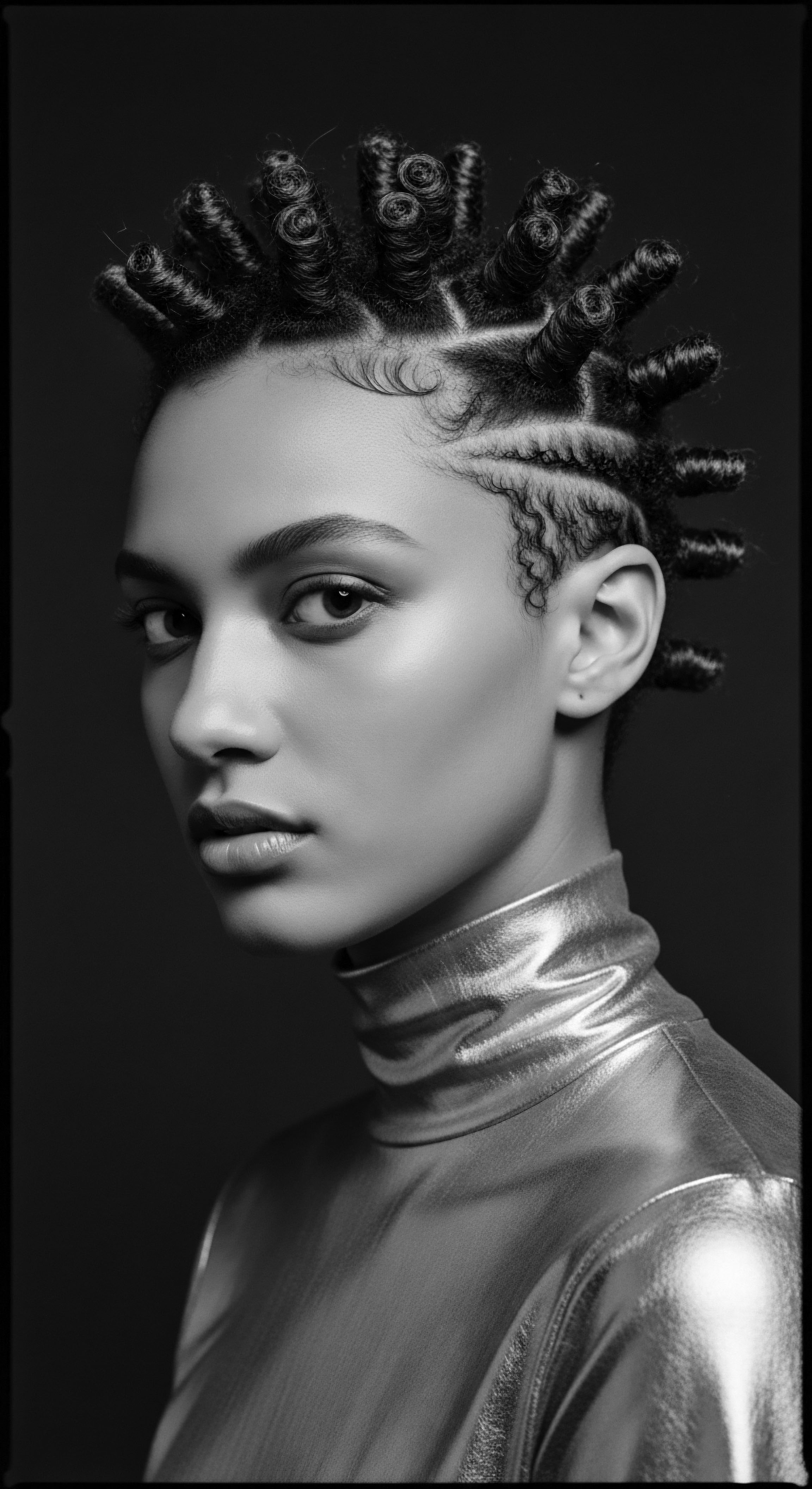
Echoes from the Source ❉ Hair’s Elemental Biology and Ancient Practices
Exploring the biological foundation of hair, particularly its diverse textures, allows us to grasp the ingenuity of ancient Egyptian hair care practices. The elemental make-up of hair, its protein structures, and its natural susceptibility to the arid climate of the Nile Valley, compelled the inhabitants of this land to devise sophisticated methods for its preservation and enhancement. They understood the necessity of maintaining moisture and flexibility, crucial elements for hair, especially for those with coily or kinky textures that often experience dryness.
Ancient Egyptian practices reveal an intuitive grasp of hair biology, even without modern scientific tools. They formulated various unguents and balms using locally sourced plant and animal products. These were applied not only for styling but also for conditioning, creating a protective barrier against the elements.
Such preparations hint at an understanding of how to seal the hair shaft, a practice fundamental to maintaining hair health across all textures, particularly those with intricate curl patterns. The historical record reveals a remarkable consistency in this approach, suggesting these were not fleeting trends but established wisdom passed through generations.
The widespread use of hair extensions and wigs, often crafted from human hair and plant fibers, speaks to a desire for versatility and protection. These were not simply fashion accessories; they offered a means to experiment with length and volume while safeguarding one’s natural hair from the sun’s relentless rays and the ever-present desert dust. This adaptive artistry, born from environmental challenges and a deep appreciation for hair’s natural properties, forms a compelling aspect of Egyptian Society’s hair heritage.
A glance at the tools unearthed from burial sites provides further insight into these foundational practices.
- Combs ❉ Many finely crafted from ivory or wood, some dating back as early as 3900 BCE, indicate a consistent practice of detangling and styling. Certain ancient combs from Africa, including those potentially used in Kemet, exhibit wider spacing between their teeth, which suggests an awareness that hair with a tighter coil pattern might be more prone to breakage if handled improperly. This detail speaks to an ancient understanding of hair’s inherent characteristics and the tools necessary for its gentle management.
- Hairpins ❉ Employed for securing elaborate styles and holding extensions.
- Curling Tongs ❉ Bronze instruments heated over fire, used to create the desired curl patterns seen in many ancient depictions.
- Razors ❉ Used for the widespread practice of hair removal, particularly for priests and for general hygiene.
The meticulous nature of these artifacts highlights a society that placed high value on hair maintenance, acknowledging its integral role in daily life and beyond. The tools and techniques employed underscore a sophisticated, inherited knowledge concerning hair.
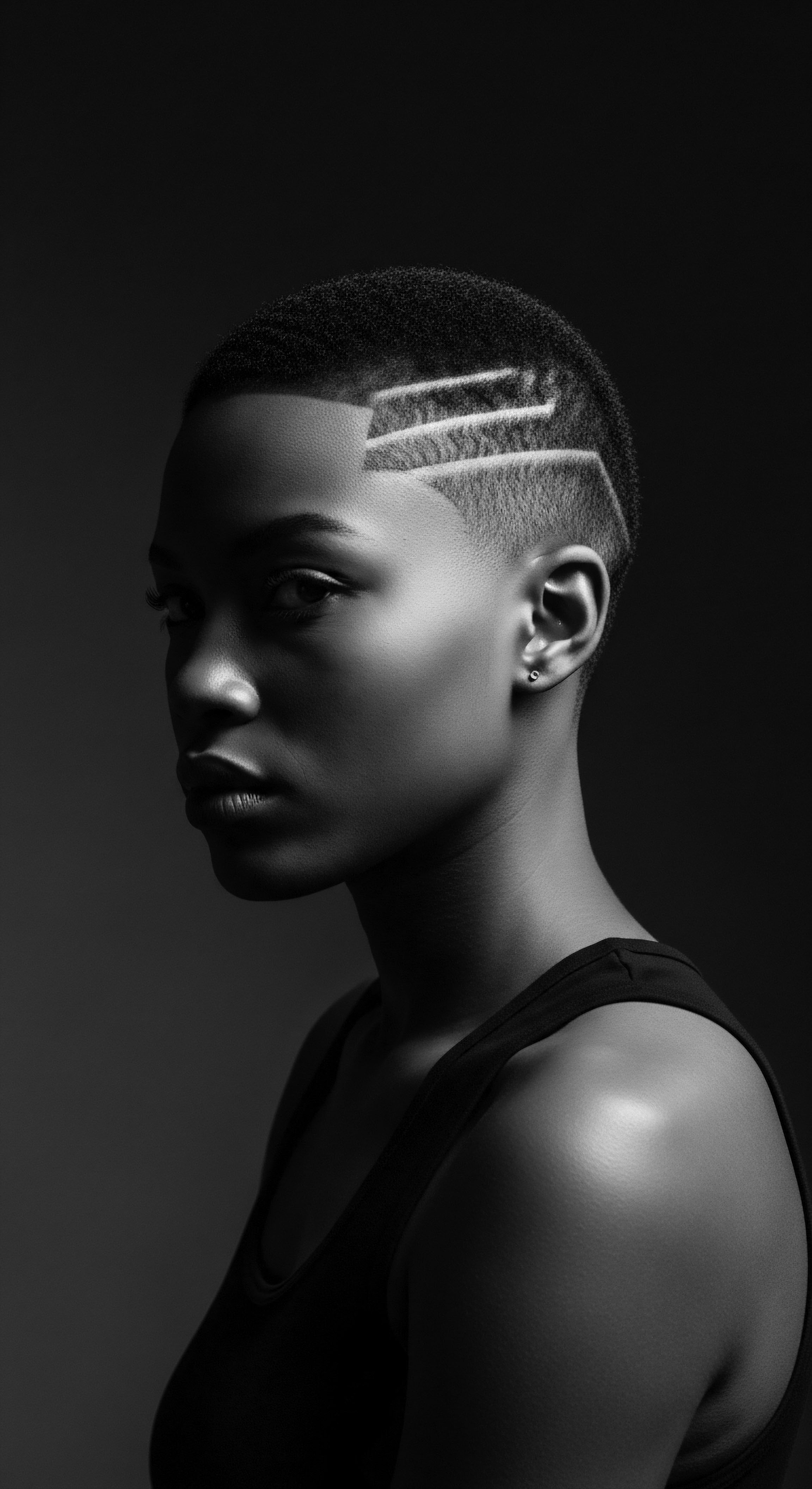
Intermediate
Moving beyond foundational aspects, an intermediate understanding of Egyptian Society’s connection to hair necessitates a deeper exploration of its cultural manifestations. Hair became an expressive medium, a complex language of symbols that transcended mere appearance. It communicated status, age, gender, and even religious devotion.
The choices made about hair were not arbitrary; they were deeply rooted in social norms and spiritual beliefs that persisted for millennia. This intricate relationship forms a living tradition, a tender thread connecting their ancient ways to contemporary hair narratives.
The societal stratification of ancient Egypt found clear manifestation in hairstyles. Individuals of elevated social standing, particularly the elite and royalty, often adorned themselves with ornate wigs. These elaborate constructions, frequently fashioned from human hair, wool, or plant fibers, showcased not only wealth but also the wearer’s direct connection to divinity. The more intricate and voluminous a wig, the higher its owner’s position in the social hierarchy.
In contrast, laborers and those outside the elite sphere often wore their natural hair, which was typically kept shorter for practicality in the harsh climate. This visible distinction underscored the structured nature of Egyptian life, where every detail, including the arrangement of one’s hair, conveyed a message.
Beyond social signals, hair held powerful religious and magical overtones. Priests, for instance, maintained shaved heads, a practice symbolizing ritual purity and readiness for divine service. This act of removing hair was a deliberate choice, intended to cleanse the body and soul from perceived impurities, thereby facilitating a closer connection to the gods.
Similarly, children universally sported the distinctive ‘Lock of Youth,’ a shaven head with a single side plait, believed to offer protection from the god Horus. This ancient custom serves as a reminder that hair was not merely a physical attribute, but a sacred element, capable of spiritual safeguarding.
Hair practices in ancient Egypt were not simply about fashion; they were deeply imbued with social meaning, reflecting class, age, gender, and spiritual beliefs.

The Tender Thread ❉ Living Traditions of Care and Community
The tender thread of ancestral wisdom concerning hair care found expression in the collective and communal practices of ancient Egyptian society. Hairdressing was a specialized profession, with both men and women operating as barbers and stylists. Elite households had dedicated maidservants trained in hair dressing, while those of lesser means might rely on relatives or friends, or visit traveling stylists. This communal aspect of hair care fostered connections, exchanging knowledge and nurturing bonds within the community.
Hygiene was a significant driver behind many hair customs. The hot, arid climate of Egypt necessitated constant attention to cleanliness. Wigs, often worn over shaved or closely cropped natural hair, offered protection from the sun and served as a barrier against lice.
This practical function of wigs highlights the Egyptians’ comprehensive approach to well-being, where beauty and health were intertwined. Even after death, great care was taken to preserve hairstyles for the journey into the afterlife, underscoring the belief in a continued existence where one’s appearance held enduring significance.
The legacy of these traditions extends into the present day, especially within textured hair communities. Many contemporary practices echo the fundamental principles employed by the ancient Egyptians ❉
| Ancient Egyptian Practice Application of Natural Oils (Castor, Almond, Pomegranate) ❉ For hydration and shine. |
| Modern Parallel in Textured Hair Care Sealing Moisture ❉ Use of natural oils (e.g. castor oil, jojoba oil) to seal moisture into hair strands, crucial for coily textures. |
| Ancient Egyptian Practice Use of Henna ❉ As a natural dye and conditioning treatment. |
| Modern Parallel in Textured Hair Care Herbal Treatments ❉ Henna and other herbal powders for strengthening, coloring, and adding luster to hair. |
| Ancient Egyptian Practice Wig and Extension Use ❉ For protection, styling versatility, and volume. |
| Modern Parallel in Textured Hair Care Protective Styles ❉ Wigs, braids, and extensions as protective measures that shield natural hair from environmental stressors and offer styling freedom. |
| Ancient Egyptian Practice Meticulous Combing and Styling ❉ Use of specialized combs and tools. |
| Modern Parallel in Textured Hair Care Detangling Tools ❉ Wide-tooth combs and fingers are essential for gentle detangling of delicate textured hair. |
| Ancient Egyptian Practice The enduring wisdom of ancient Egyptian hair care continues to influence contemporary practices, reflecting a timeless quest for hair health and cultural expression. |
These parallels are a testament to the ancestral knowledge systems that recognized hair’s unique properties and devised methods to care for it. The wisdom passed down through generations, adapted across continents and eras, forms an unbroken line of care.
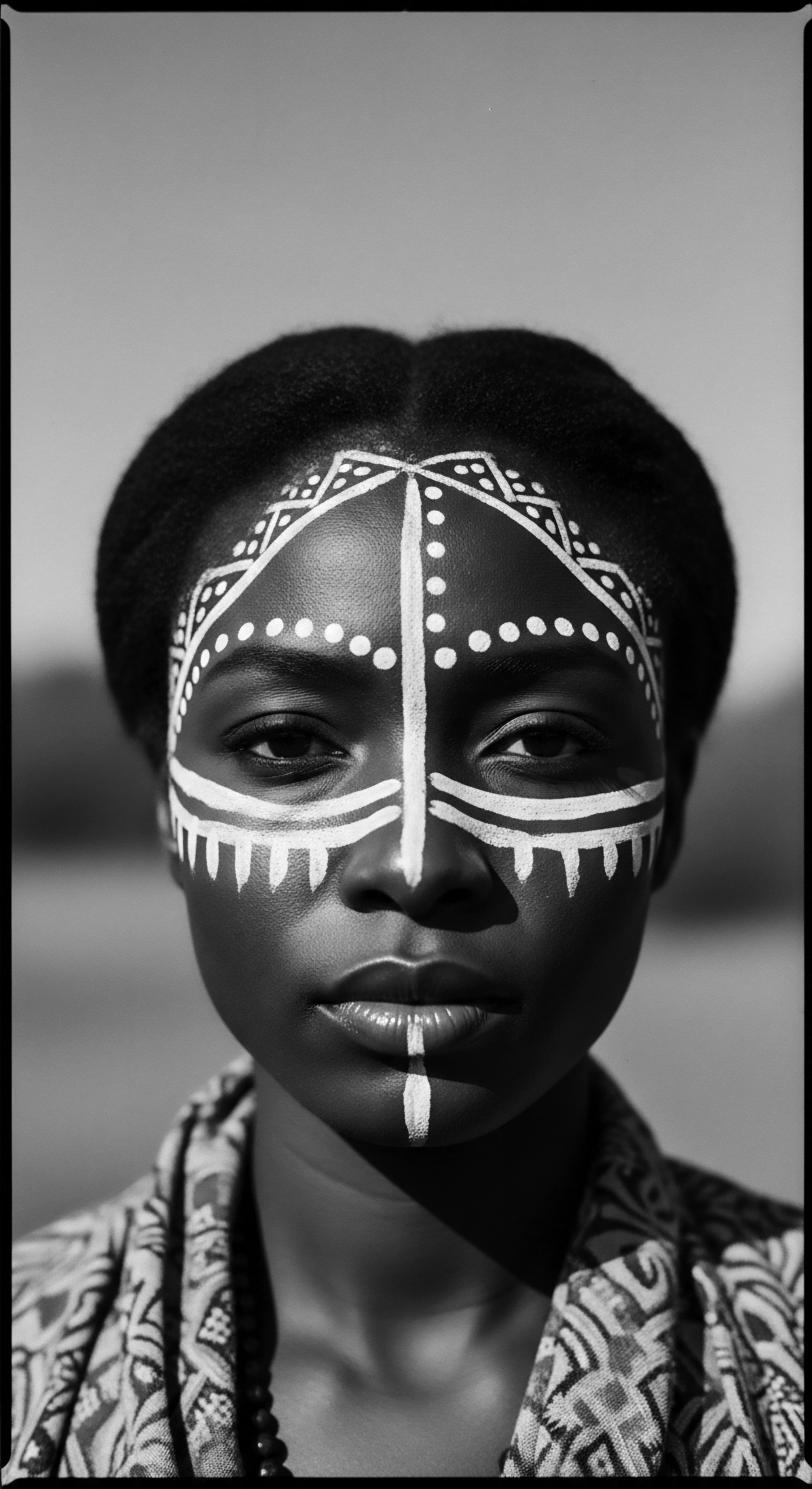
Academic
From an academic vantage point, the Egyptian Society’s profound influence on hair culture constitutes a significant area of inquiry, especially when examining its intersections with textured hair heritage and ancestral practices. The very meaning of hair, its role in social constructs, and its preservation strategies during life and in death offer compelling insights into their advanced understanding of both human biology and societal organization. This perspective allows for a critical evaluation of how ancient practices, often perceived through the lens of antiquity, were, in fact, sophisticated applications of empirical knowledge, anticipating many modern dermatological and cosmetic principles. The academic discourse surrounding ancient Egyptian hair care shifts our understanding from mere historical anecdote to a recognition of a vibrant, interconnected system of beauty, health, and identity.
The historical record reveals a profound conceptualization of hair as a component of the enduring self, a belief that transcended the ephemeral nature of life. This is evidenced by the meticulous preparation of hair for funerary rites, where styling was often preserved with the same diligence as other aspects of mummification. Scholars investigating tomb chapels from approximately 1480 to 1350 BCE have meticulously documented how hair iconography systematically depicted stratification across gender, status, and age, demonstrating a societal blueprint encoded in coiffure. This intricate system illustrates how individuals were positioned within their communities and their perceived roles within the grand cosmic order.
An intriguing example that powerfully illuminates the Egyptian Society’s connection to textured hair heritage and ancestral practices lies within the forensic analyses of mummified hair. A groundbreaking study conducted by McCreesh, David, and Garland (2011) applied gas chromatography–mass spectrometry (GC-MS) to hair samples from eighteen ancient Egyptian mummies, predominantly sourced from a Greco-Roman cemetery in the Dakhleh Oasis. Their investigations revealed that nine of these mummified individuals exhibited hair coated in a resilient, fat-like substance. Chemical analyses precisely identified this coating as comprising biological long-chain fatty acids, including palmitic acid and stearic acid, derived from both plant and animal origins.
The rigorous scientific findings from this study suggest that this fatty application was not merely a consequence of the embalming procedure; rather, it was interpreted as a sophisticated styling product, akin to a modern hair gel or fixative, utilized during life to maintain intricate hairstyles. This insight is particularly compelling because the fat-based substance was found on hair from both artificially mummified bodies and those naturally preserved by the dry desert sands, indicating its use as a common beauty product. Moreover, the researchers observed that unlike other parts of the body which were coated with resin/bitumen-based embalming materials, the hair samples specifically received a fat-based substance, suggesting a targeted approach to hair preservation during mummification.
This careful distinction points to an advanced understanding of hair’s unique structural needs. The ability of such ancient formulations to preserve hairstyles for millennia, even in death, speaks volumes about the efficacy and empirical wisdom embedded in these ancestral cosmetic practices.
The presence of these fatty acids on mummified hair from diverse individuals – ranging in age from four to fifty-eight years – strongly suggests that ancient Egyptians possessed an empirical understanding of how to manage and style various hair types, including those with tighter curl patterns often found in textured hair. Such fatty applications would have provided weight, moisture, and hold, essential properties for defining curls, preventing frizz, and securing braids or plaits, all common ancient Egyptian hairstyles. This nuanced application reflects a deep, experiential knowledge of hair hydrodynamics and protein interaction, predating formal chemistry by thousands of years.
Academic analyses of ancient Egyptian hair reveal a sophisticated, empirically-driven understanding of hair care chemistry and mechanics, particularly relevant to maintaining textured hair.
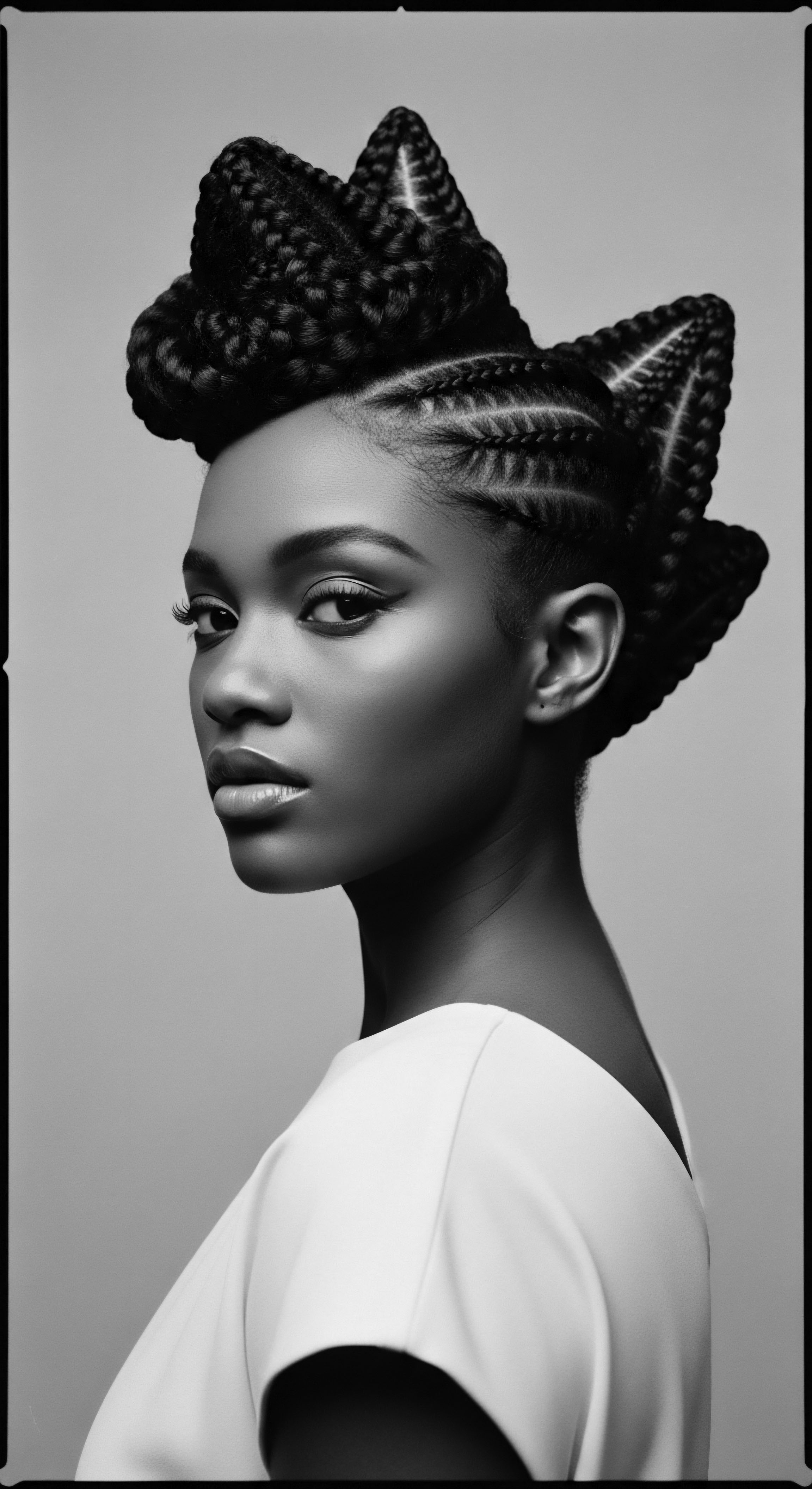
The Unbound Helix ❉ Voicing Identity and Shaping Futures
The academic lens further allows us to consider the Egyptian Society’s contribution to the global conversation about identity, particularly through the enduring symbolism of hair. The choices made about hair, whether wearing intricate wigs or maintaining natural locks, were active declarations of one’s place in the cosmic and social order. These choices resonate powerfully with contemporary discussions about hair as a marker of identity, especially for individuals of Black and mixed-race heritage who navigate complex cultural landscapes concerning their natural hair. The concept of hair as a “democratic form of adornment” where its transformation could communicate status regardless of inherited wealth (Fletcher, 2025) speaks to its innate power as a tool of self-presentation.
The influence of neighboring African cultures, such as the Nubians, on Egyptian hairstyles further enriches this academic inquiry. The adoption of styles mirroring short, curly hair, sometimes referred to as “Nubian wigs” during the Amarna period, underscores the dynamic interchange of cultural expressions across ancient African societies. This exchange points to a recognition and appreciation of diverse hair textures within the broader Nile Valley region. The long history of locs, or dreadlocks, in ancient Egypt also connects directly to ancestral African hair traditions, offering a profound link for contemporary individuals who wear such styles as a reclamation of identity and cultural pride.
Examining the archaeological evidence of ancient Egyptian combs provides a particularly insightful academic point for understanding textured hair.
- Spacing of Teeth ❉ Ancient Egyptian combs, particularly those from Kemet, often possessed wider gaps between their teeth compared to contemporary European combs.
- Historical Parallels ❉ This design choice, according to ethnographers, suggests an innate understanding of how to manage hair prone to fragility and breakage, a characteristic often observed in hair with tighter coil patterns.
- Tools of Care ❉ Such combs represent not merely functional tools, but artifacts embodying generations of empirical knowledge about gentle detangling and styling, specifically suited for hair that benefits from thoughtful handling.
The meticulous methods of hair care, the use of specialized tools, and the scientific understanding of hair’s properties evident in ancient Egypt present a compelling case study. These practices, once dismissed as rudimentary, are now seen as sophisticated responses to specific needs, reflecting an ancestral wellness philosophy where outer appearance and inner vitality were inextricably linked. This profound connection to hair, preserved through archaeological findings and chemical analyses, shapes our comprehension of how ancient societies articulated identity and how those expressions continue to influence future generations seeking to honor their hair heritage.
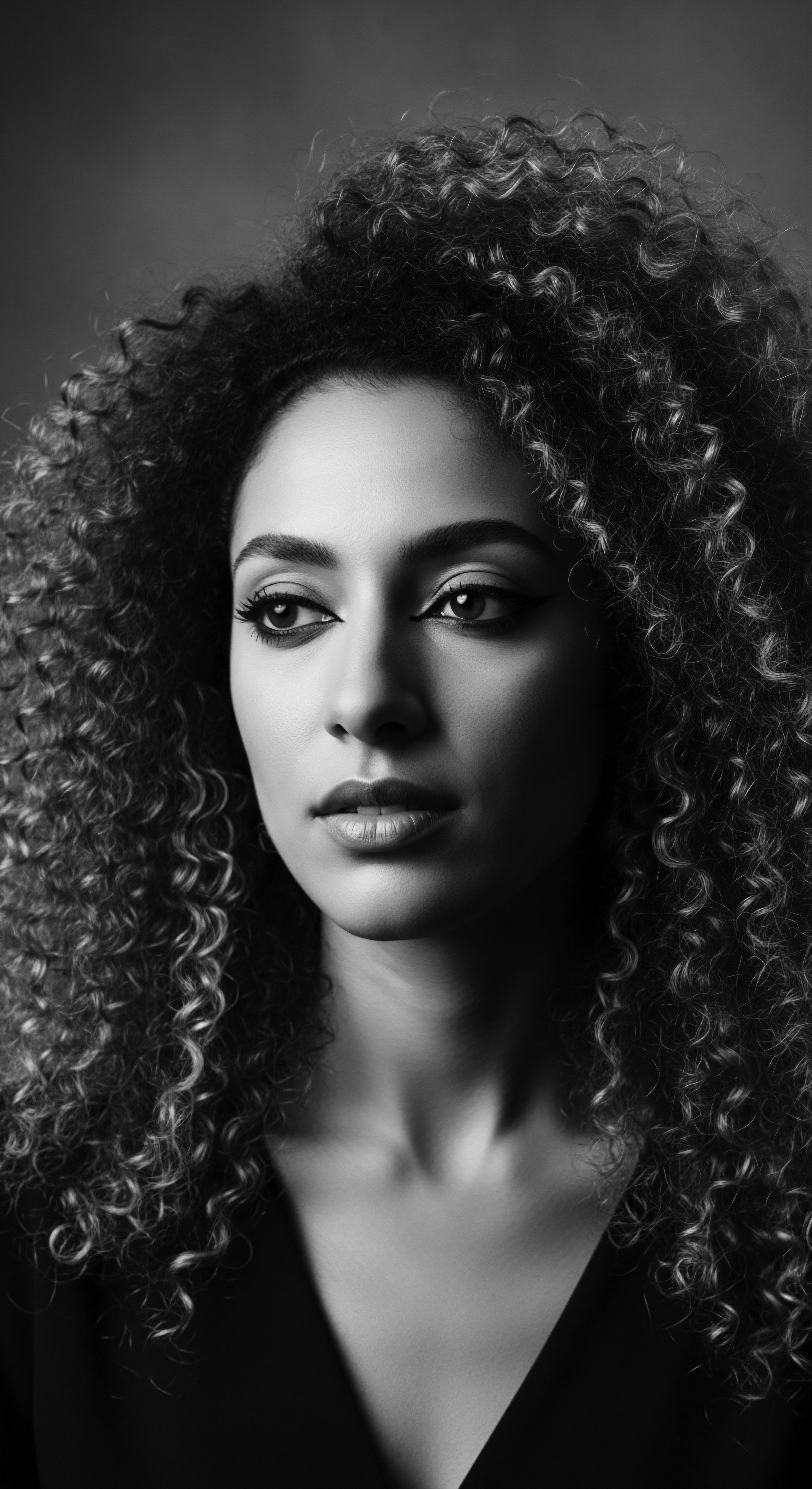
Reflection on the Heritage of Egyptian Society
The enduring legacy of Egyptian Society, as perceived through the delicate, yet resilient, narrative of hair, invites us to contemplate a profound truth ❉ our hair carries the whispers of generations past. The meticulous care, the intricate artistry, and the deep symbolism accorded to hair in ancient Egypt are not mere relics of a bygone era. Instead, they stand as vibrant testaments to an ancestral wisdom that understood the body, spirit, and community as a cohesive whole. For those who trace their lineage through the intricate curl patterns and rich histories of Black and mixed-race hair, this connection to the Nile Valley is a compelling thread in their personal tapestry of identity.
The recognition of hair’s inherent variability, its response to climate, and its capacity for expressive transformation, informed a system of care in ancient Egypt that speaks to universal principles of respect and nourishment for every strand. It prompts us to reflect on how these ancient practices, validated by modern scientific scrutiny, offer guidance for our contemporary hair journeys. The knowledge of ancient Egyptians, whether in their use of fatty emollients or their crafting of protective styles, reminds us that the pursuit of hair health is a timeless endeavor, deeply rooted in the wellspring of human ingenuity.
This historical journey through Egyptian Society’s hair heritage serves as a beacon, illuminating the beauty and resilience inherent in textured hair traditions across the globe. It encourages a celebration of ancestral practices, seeing them not as antiquated customs, but as sophisticated methodologies born from deep observation and intuitive understanding. Our present efforts to honor natural hair, to advocate for its diverse forms, and to connect with its cultural significance, resonate with the ancient echoes from the Nile, proving that the soulful story of hair is an unbound helix, continuously unfolding through time.
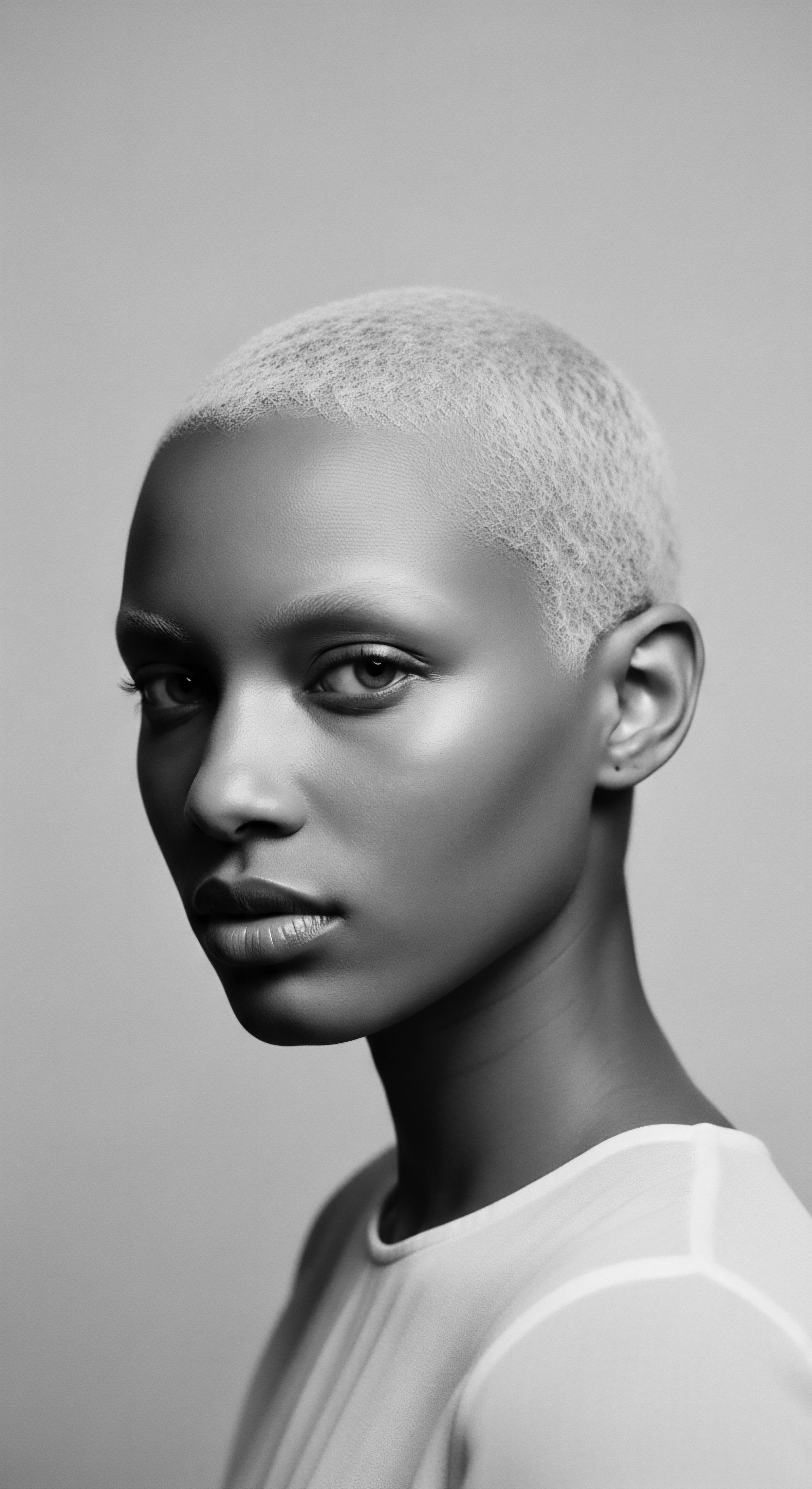
References
- Fletcher, Joann. “Hair and Wigs in Ancient Egypt.” Rawi, Issue 13.
- McCreesh, Natalie, David, A. Rosalie, & Garland, Alan N. “An integrated study of the hair coating of ancient Egyptian mummies.” Journal of Archaeological Science, vol. 38, no. 12, 2011, pp. 3432-3434.
- Robins, Gay. “Hair, Gender, and Social Status in Ancient Egypt.” JSTOR Daily, 11 Sept. 2020.
- Marshall, Amandine. “The magic and power of hair in ancient Egypt.” The Past, 20 Feb. 2025.
- El-Sayed, Tarek F. “Role of the Hair in Ancient Egypt.” International Journal of Tourism and Hospitality Management, vol. 4, no. 1, 2024, pp. 10-23.
- Silver, Carly. “Hair, Gender, and Social Status in Ancient Egypt.” JSTOR Daily, 11 Sept. 2020.
- Fletcher, Joann and Salamone, Filippo. “An Ancient Egyptian Wig ❉ Construction and Reconstruction.” Internet Archaeology, vol. 42, 2016.
- Marshall, Amandine. “Headdresses, Hairstyles, and Wigs in Ancient Egypt.” Historicaleve, 7 Oct. 2024.
- Tassie, Geoffrey J. “The Social and Ritual Contextualisation of Ancient Egyptian Hair and Hairstyles from the Protodynastic to the End of the Old Kingdom.” UCL Discovery, 2009.
- Fletcher, Joann. “Ancient Egyptian Hair and Beauty.” The British Museum.
